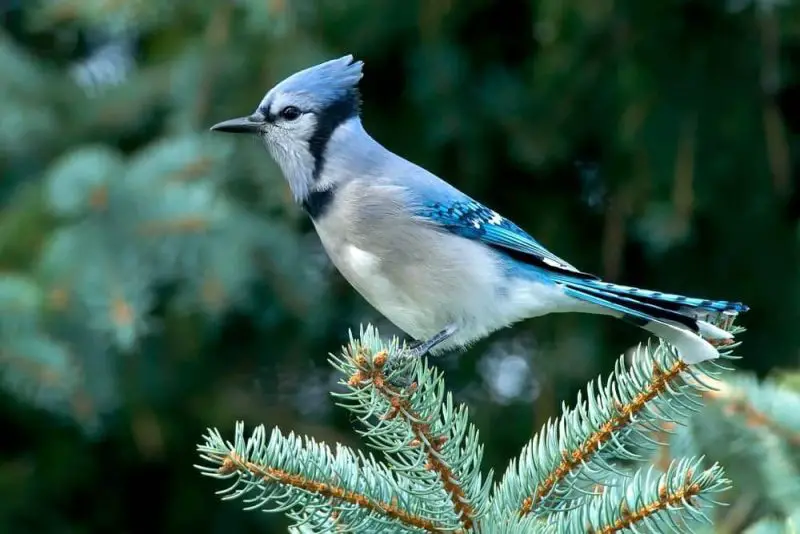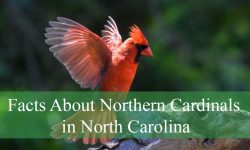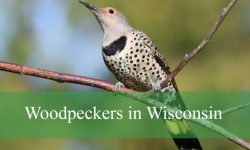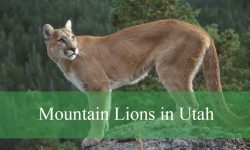In Georgia’s forests, blue jays are hard to miss. Their sharp voices, bright blue plumage, and expressive crests make them stand out immediately. You can hear them along oak ridges in North Georgia, in the mixed pine–hardwood forests of the Piedmont, and throughout the coastal plain where woodlands are dotted with longleaf pine and old-growth live oaks. While most people recognize their appearance and loud calls, the true nature of blue jays goes far beyond their bright feathers and commanding voices.
In Georgia’s diverse landscapes, blue jays play essential ecological roles that often go unnoticed. They act as seed dispersers, forest sentinels, social communicators, and opportunistic foragers whose behaviors shift with habitat, season, and climate. Their intelligence rivals that of crows, yet they are frequently misunderstood due to myths about aggression or nest raiding. Their hidden habits and complex social structures reveal a species far more intriguing than most residents ever realize.
This article explores seven surprising things about blue jays in Georgia’s woodlands. Each section sheds light on behaviors, survival strategies, and ecological functions that make this species one of the most important—and underrated—birds in the Southeast.
1. Blue jays are exceptional mimics and use vocal imitation strategically

Blue jays are among the most skilled vocal mimics in North America. In Georgia woodlands, their imitations often surprise people who think they’ve heard a hawk calling overhead, only to spot a blue jay perched on a branch seconds later.
Blue jays frequently imitate red-shouldered hawks and Cooper’s hawks, which are common woodland predators. This mimicry can serve several purposes. Sometimes the calls warn other jays and woodland birds of actual predators. Other times, jays use the imitation to create confusion among competing birds, especially around feeding areas.
Their mimicry is not limited to hawks. They can imitate crows, catbirds, and even mechanical noises from suburban areas. Young jays learn this skill through observation and practice, adding individual variations to their vocal repertoire as they develop.
Georgia’s dense forests amplify these calls, helping jays communicate over great distances. This vocal flexibility gives them a unique advantage in complex habitats filled with predators, competitors, and shifting environmental cues.
2. They play a major role in oak forest regeneration across Georgia
One of the least appreciated traits of blue jays is their contribution to forest regeneration. Blue jays are responsible for dispersing acorns far beyond the parent tree, helping new oak seedlings establish across Georgia’s woodlands.
Blue jays transport acorns using a pouch in their throat, carrying multiple seeds at once. They cache acorns in the ground for winter, burying them in scattered locations. Many of these acorns are forgotten or abandoned, eventually sprouting into new oak trees.
In areas like the Piedmont region, where oak-hickory forests dominate, blue jays have helped forests recover after natural disturbances and timber harvests. Their caching behavior spreads acorns across open areas, ridgelines, and edges where new seedlings can thrive.
Their role as seed dispersers extends to other tree species, including beeches, pecans, and occasionally pine seeds. This makes blue jays one of Georgia’s most important natural foresters, helping maintain biodiversity and forest resilience.
3. Blue jays maintain complex social hierarchies that influence daily behavior
Although often seen alone or in small groups, blue jays are deeply social birds with intricate hierarchies. In Georgia’s forests, their interactions reflect a mixture of cooperation, dominance, and territorial negotiation.
Family groups often stay together through much of the year. Young birds learn foraging techniques, predator detection, and communication cues from adults. Social ranking determines which individuals access food first, which defend territories, and which take the lead during group movements.
During winter, blue jays form loose flocks that roam woodlands in search of food. These flocks benefit from shared vigilance—many eyes watching for predators such as owls, hawks, and foxes. Their group structure also allows them to exploit food sources efficiently, from mast-rich forests to backyard feeders.
The stability of these hierarchies helps blue jays survive seasonal challenges and allows them to coordinate highly adaptive behaviors unique among Georgia’s woodland birds.
4. They are opportunistic omnivores with adaptable diets
Blue jays have a far more varied diet than many woodland birds. Their flexible feeding habits allow them to thrive in Georgia’s diverse ecosystems, from mountain coves to coastal woodlands.
Blue jays consume a mix of:
- Acorns and other mast
- Insects and larvae
- Fruits and berries
- Small amphibians or reptiles
- Occasional eggs or nestlings
- Human-provided foods such as peanuts or seeds
Despite common belief, nest raiding makes up a very small percentage of their diet. Most of their feeding effort focuses on insects, especially during summer when caterpillars and beetles are abundant. This insect predation helps control populations that can damage woodland vegetation.
Their omnivorous tendencies also help them adapt to seasonal changes. During winter, when insects disappear and mast becomes crucial, jays rely heavily on cached acorns and food found in mixed hardwood forests. This flexibility explains why blue jays remain year-round residents in most of Georgia.
5. Blue jays act as woodland sentinels, warning other species of danger
One of the most remarkable behaviors in Georgia’s blue jays is their role as forest guardians. Their keen eyesight and loud calls make them highly effective at detecting predators and alerting other birds and mammals.
When a hawk, owl, or snake enters the area, blue jays issue loud, repetitive alarm calls. These warnings ripple through the forest, prompting other wildlife to freeze or take cover. Squirrels, chipmunks, thrashers, titmice, and warblers often respond instantly to jay alarms.
They also participate in mobbing behavior, gathering with other birds to harass owls or perched predators. Their persistent calls sometimes force predators to move, reducing danger for smaller species.
This sentinel role strengthens woodland communication networks, making blue jays an important part of Georgia’s ecological community.
6. They demonstrate remarkable intelligence and problem-solving abilities
Blue jays belong to the corvid family, which includes crows and ravens—some of the smartest birds in the world. Their intelligence becomes clear when observing their behaviors in Georgia’s forests, suburban areas, and backyards.
Blue jays can:
- Remember cache locations months after burying food
- Solve simple puzzles to access feeders
- Use strategy when competing for food
- Recognize specific predators and alter behavior accordingly
- Identify individual humans, especially in areas with regular feeding
Their intelligence helps them adapt to changing habitats, including urban woodlands. In cities like Atlanta, blue jays take advantage of bird feeders, fruiting trees, and ornamental shrubs. Their ability to learn quickly allows them to exploit new resources and avoid risks.
In natural forests, their cognitive abilities aid in navigation, caching, predator avoidance, and social interaction—all of which support long-term survival.
7. Blue jays migrate unpredictably, making their seasonal patterns hard to track
Many Georgians assume blue jays are strictly non-migratory, but their seasonal movements are far more complex. In fact, blue jay migration is one of the least understood behaviors among North American songbirds.
Some blue jays remain in Georgia year-round. Others migrate short distances into neighboring states. A smaller portion moves much farther, traveling hundreds of miles north or south depending on food availability and weather.
The unpredictability of their migration is linked to mast production. In years with heavy acorn crops, jays may stay put. During poor mast years, large numbers may leave Georgia woodlands in search of more abundant food.
Their migration is often subtle—unlike dramatic flocks of warblers or geese—but observant birdwatchers notice increases or decreases in jay populations during fall and spring.
Georgia’s wide range of forest types contributes to this flexibility. Birds from northern regions may even winter in Georgia’s Piedmont and coastal plain, taking advantage of the state’s mild climate and abundant winter food.
Frequently Asked Questions About Blue Jays in Georgia
Are blue jays common in all parts of Georgia?
Yes. They are found statewide—mountain forests, Piedmont hardwoods, pine ecosystems, and coastal woodlands.
Do blue jays stay in Georgia year-round?
Most do, but some migrate in response to food availability. Their movement patterns vary from year to year.
Are blue jays aggressive?
They can be assertive around feeders or during breeding season, but they are not more aggressive than most protective bird species.
What do blue jays eat in Georgia?
They eat insects, nuts, acorns, fruits, small vertebrates, and seeds. They are highly opportunistic.
Why do blue jays scream so loudly?
Their calls serve communication, territory defense, predator warnings, and group coordination.
Do blue jays raid nests?
They can, but such behavior is rare. Studies show nest predation makes up a very small portion of their diet.
How long do blue jays live?
In the wild, many live 7–10 years. Some captive individuals have lived more than 15 years.
Are blue jays helpful to the ecosystem?
Yes. They disperse seeds, alert wildlife to predators, control insects, and influence forest growth.
Do blue jays recognize humans?
They can recognize individuals, especially those who feed them. Their memory is strong and long-lasting.
What predators threaten blue jays?
Hawks, owls, snakes, and raccoons are the most common predators in Georgia woodlands.
Final Thoughts
Blue jays are more than colorful birds with loud calls. Their intelligence, adaptability, and ecological importance make them essential residents of Georgia’s forests. They influence seed distribution, warn other wildlife of predators, and contribute to the dynamic social interactions that shape woodland life.
Understanding their hidden behaviors adds depth to every encounter—whether you see one perched in a backyard oak, hear its call echoing through a pine forest, or watch a flock move along the edge of a Georgia trail. These birds embody the complexity of the southeastern woodlands and reveal how much remains to be discovered in everyday wildlife.






